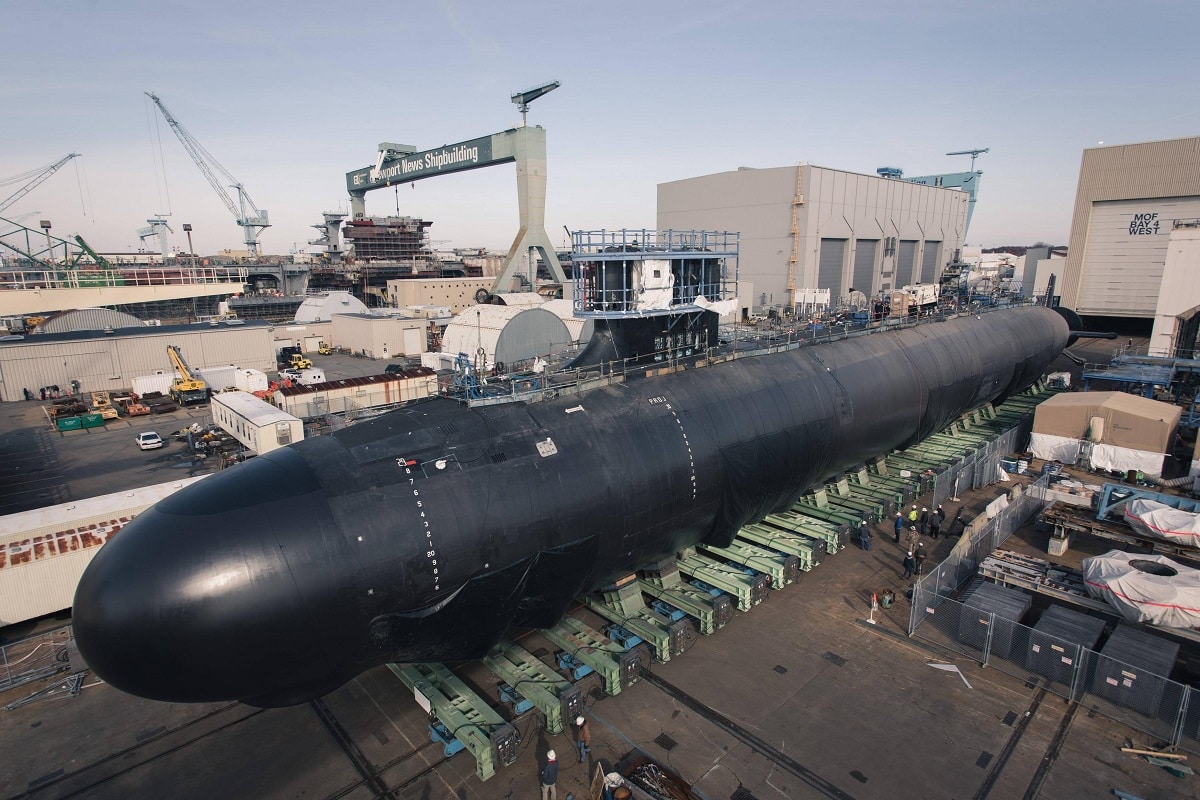Earlier this month it was reported that the U.S. Navy was looking to boost the number of days a Littoral Combat Ship (LCS) could remain operational by addressing design flaws in some thirty-two parts that need to be replaced all too regularly. This has included the combining gears on the Freedom-class variant, among other parts.
However, the issue of parts that wear out too quickly is also a serious issue with the Navy’s latest Virginia-class submarines. According to a report this week from Bloomberg, the service has swapped out more than 1,600 parts among the new nuclear-powered fast-attack submarines since 2013. Components that were supposed to last at least three decades are wearing out far too soon, and parts are now being regularly shuttled among the submarine fleet.
The Challenge
The forty-eight boats of the Virginia-class have been seen as the pillar of the Navy’s undersea strategy to counter China’s growing service fleet – and each succeeding variant or “block” has increased firepower and capabilities. The submarines are able to attack an adversary with torpedoes, and can even strike land targets with Tomahawk cruise missiles. The nuclear-powered boats have unlimited range and endurance and can stay on patrol for months – at least in theory.
However, as Bloomberg noted, the parts problem is impacting readiness. The news outlet quoted Bryan Clark, a former special assistant to the chief of naval operations, and naval analyst with the Hudson Institute. Replacement parts are just one part of the problem.
“The Navy is not investing enough in maintenance, supply chains and shipyard infrastructure,” Clark told Bloomberg. “The Navy may have been too slow to act on indications that come components were wearing out faster.”
The issue of replacement parts is compounded by the fact that the United States Congress has pushed the Navy to increase the production of the fast-attack submarine. Lawmakers have wanted three instead of two vessels constructed each year.
Yet, there simply aren’t enough replacement parts to go around, so when a submarine returns to port for maintenance, it is now all too common to “cannibalize” – essentially “borrow” – the necessary components to finish the refurbishment on another Virginia-class boat. Most of the borrowed parts are for non-propulsion electronic systems, and between 2013 and 2019 the number of swapped parts steadily increased before dropping last year.
What To Do About It
The swapping of parts has been a stop-gap measure meant to get the submarines quickly returned to duty, but it adds to the workload, while there is also the increased likelihood that parts could be damaged during the transfer. The Navy has said it is “not satisfied with any material cannibalization that limits our submarine fleet’s ability to respond to national tasking and is taking the steps necessary to avoid these scenarios.”
The service is already working to address the issue by ordering parts earlier and to ensure that there aren’t work stoppages or other delays as submarines await the components. At the same time, General Dynamics Corp., one of the prime contractors on the Virginia-class program has responded to the issues and Liz Power – spokesperson for the company – told Bloomberg in an email, “We work closely with the Navy to help it address any unanticipated issues with parts, to include initiatives to design improvements that can be applied to future boats.”
For now the parts swapping/cannibalization is likely to continue and in turn, impact the readiness of the U.S. Navy’s fast-attack submarine fleet.
Peter Suciu is a Michigan-based writer who has contributed to more than four dozen magazines, newspapers and websites. He regularly writes about military small arms, and is the author of several books on military headgear including A Gallery of Military Headdress, which is available on Amazon.com.

